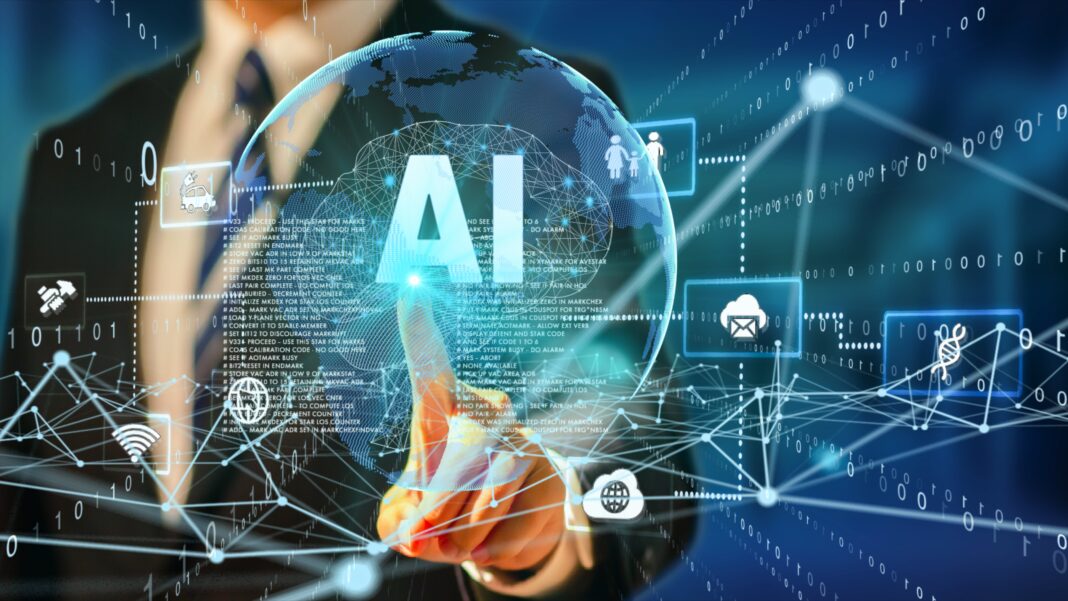Digital transformation is responsible for businesses everywhere improving their prospects, productivity and profits, with 56% of CEOs saying digital improvements have boosted revenue, according to Gartner.
The advancement of artificial intelligence (AI) technology has added another element of intrigue and potential to the world of digital technology.
As time has progressed, so has the capability of AI. Features that were once reserved for science fiction movies, like voice recognition and commands, are steadily becoming part of daily life.
But what does AI mean for businesses, specifically their digital transformations? Will AI prove to be another huge leap? Or just another flash-in-the-pan?
What is digital transformation and how has digital transformation changed businesses so far?
Digital transformation is the action of replacing outdated systems with more advanced digital technology in the hopes of improving company efficiency.
AI and IoT for example have already played a huge part in the digital transformation of most sectors from manufacturing to healthcare.
Real-time machine analytics for example make it possible to predict equipment failures so repairs can be made before an issue arises, while remote healthcare and wearable technology have made it easier than ever for health and wellbeing to be tracked from anywhere.
The imminent switch off of the existing ISDN phone lines, and replacing them with a cloud-based VOIP system is set to completely transform business communication from one reliant on fixed, static phone lines to a fully remote operation.
What is artificial intelligence?
Artificial intelligence can be defined as computer-based programs emulating intelligence and performing functions that are normally reserved for humans.
Not only this, AI is capable of learning as it progresses, adapting to different ways of working and tuning up its methods depending on what it “observes”.
This has led to the rise of programs and features that can produce work and accomplish tasks – particularly repetitive tasks – that could once have only been fulfilled by a human worker.
AI features are used by businesses to save time and money, as well as to boost productivity and overall business process speeds.
Where could AI take digital transformation in the future?
More intelligent automated customer service chatbots
Chatbots have been used in customer service for years now, but their abilities and responses have been limited.
Language processing issues, a lack of knowledge outside a specific information source and the inability to deal with multiple queries at once put them at a distinct disadvantage.
That’s gradually changing, though, with the addition of up-to-date artificial intelligence software.
The ability to answer complex, multi-layered questions through intelligent voice analysis, and adapt service processes to the specific needs of the customer could all become commonplace.
Plus, chatbots are sounding more human by the day, with some able to mimic human voice tones depending on the situation, allowing for more in-depth conversations and a more authentic-feeling customer service experience.
The more chatbots evolve, the more the customer service experience will become automated. Meaning your digital transformation could remove some of the human element from your operations, but improve efficiency overall.
By 2027, chatbots may become the primary customer support channel for 25% of all companies, according to Gartner.
AI could control and direct bandwidth where appropriate
With more devices connected to the internet than ever before, and the long list of smart devices we all use growing by the second, there is growing concern about the strain placed on our internet connections.
However, AI will be able to help in this department, too. AI programs can be utilised to monitor our internet speeds and our devices, to better allocate bandwidth where appropriate.
At the moment, devices sharing the same network have to share the same connectivity. But AI programs monitoring our networks can pick and choose which devices and processes receive greater bandwidth and speed, prioritizing certain actions over others.
For example, in large factories, many devices need to be connected to the network at once.
But if that network begins to struggle, virtually all factory processes may suffer.
That wouldn’t be the case will intelligent network monitoring provided by AI, though. A user could pre-determine which processes have priority in the event of slowed network speeds and the AI will direct more bandwidth to the most important areas.
AI could also monitor historical network activity and could anticipate when the network may experience slowed speeds, or when certain devices may need a bandwidth boost, based on factors like the time of day and other users jumping on the network.
Improved cybersecurity gives us greater protection
As technology improves, so does the work of criminals seeking to strike businesses and hard-working people.
Your current digital transformation may have seen the introduction of more robust anti-virus software, virtual private networks or password managers. All of which are great options to help keep your sensitive data protected.
But even the most up-to-date security systems will eventually seem useless in the face of future improvements.
Most current firewalls and anti-virus programs get to work in the event of an attack to protect systems and data.
But security programs with the added element of AI and machine learning could monitor network activity and pre-empt an attack, making the necessary security changes before the attack even takes place, for ultimate protection.
Machine learning and deep learning continue to develop several areas of business
You’ve probably heard of machine learning – the process in which machines can predict what to do next, by analysing the data involved in previous events.
The appropriately-titled deep learning, however, is the next step in machine learning evolution.
Rather than simply focusing on past events to determine what to do next, deep learning helps programs complete complex functions and predict future processes by following a similar structure to the human brain, known as artificial neural networks.
It sounds complicated. But, in short, it means programs using deep learning can perform much deeper analyses.
Because of its advantage over outdated systems, some businesses are employing deep learning programs for a wide variety of uses. Including security, customer relations, data input and analysis, e-commerce efforts and more.
For example, deep learning programs can sift through customer purchase data on a more intricate level, taking into account every element of the sales process down to minute details, to determine why and how customers make their purchases.
This data could then be used to adapt products or services for future purchases, or even to target customers directly with products and offers tailored specifically to them.
The more accurately you’re able to understand a customer, the better chance you have of giving them what they want.
If deeper learning continues to offer greater levels of customer insight, amongst its other advantages, your digital transformation into deep learning processes could totally change the way you interact with your customers.
Will your digital transformation introduce you to the benefits of AI?
If your business is yet to use any AI-based programs, the chances are you will at some point if AI continues to spread its wings in the business world in years to come.
We may soon reach a point where AI isn’t a handy extra we can use to improve business processes, but a standard fixture in all elements of our work.
There’s no denying the advantages of AI technology in digital transformations. The question isn’t whether or not AI will improve your efficiency, it’s how far are you willing to automate your services and put all your trust in new and evolving technology?

















